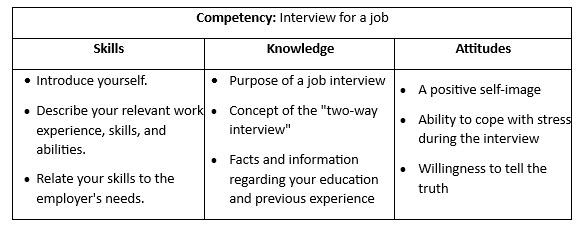Learning Objectives: the Building Blocks for Competencies
We engage in a learning experience to “understand” a topic and use the new information to perform actions. These actions – what we can do with the topic we just learned - are called competencies. They form the framework for a learning experience.
But we don’t perform the competencies immediately. Instead, we “build up” to performing them—by first learning the supporting concepts, processes, and skills need to attain them…
Learning objectives. They are the building blocks that help us meet the competencies - usually numbering two to 10 per competency.
Follow these three steps to write effective learning objectives:
1. Analyze the competency.
Competencies are written at Bloom’s Taxonomy application level or above. Brainstorm the skills, knowledge and attitudes needed to perform a competency. Consider creating a table of your results:

2. Identify prerequisites.
Compare your table to the learning experience prerequisites—if one appears on the list, don’t include it as a learning objective. Pre-requisites must be completed prior to beginning the learning experience.
3. Write learning objectives.
Write two to 10 learning objectives per competency using a single action verb at or below the Bloom’s Taxonomy verb level of the competency. Ensure the outcome concisely describes the skill, process, or knowledge and is measurable and observable.
Help your learners increase their ability to perform competencies by writing effective learning objectives – the building blocks of your courses. Contact us to learn more about how WIDS can help.
WIDS (Worldwide Instructional Design System) is a nonprofit organization that provides curriculum design software, consulting, and training services.
Connect with us
We're here to help you embark on your project with confidence, whether you're developing curriculum from the ground up or fine-tuning for training and education needs. Tell us your challenge and we will build a solution together.

.svg)
